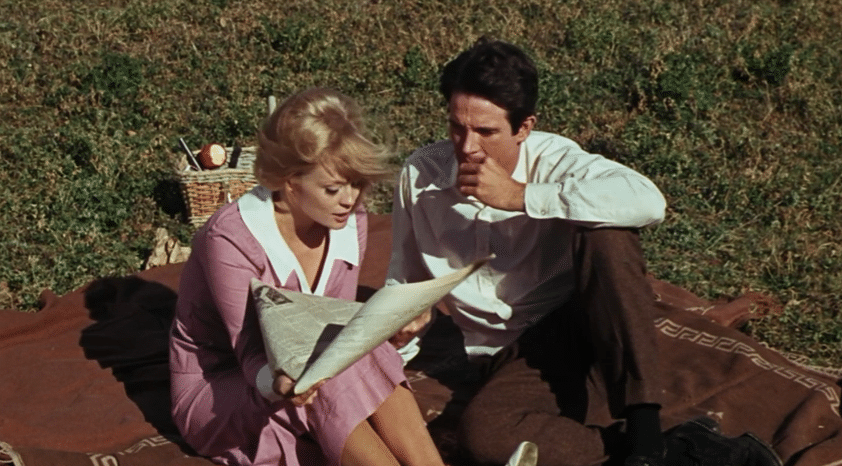
There are two stories of Bonnie and Clyde. The first began in the early 1930s when waitress Bonnie Parker decided to join robber Clyde Barrow on a crime spree that lasted four years and resulted in 15 deaths across nearly as many states — the last of which were their own. The second story began 50 years ago, when the violent, romantic biopic Bonnie & Clyde, directed by Arthur Penn and starring a young Warren Beatty and Faye Dunaway, dropped in theaters like a firecracker. Both are the stuff of legend. Depending on what you read, the real Bonnie and Clyde were either brutal monsters or Depression-era Robin Hoods, criminal masterminds or fools on a lucky streak.
The history of the film Bonnie & Clyde is similarly larger-than-life. Divisive for its gleeful violence, viewers either received the film as a refreshing if bloodied finger on the American pulse or condemned it as an unwelcome symbol of the country’s impending moral decay. Beatty himself only cared about one critic, New York Times writer Bosley Crowther: “Everybody in the world can like a movie, and if Crowther doesn’t, he kills it,” he told Roger Ebert soon after the film’s release.
In a testament to the film’s power, Beatty was quickly proven wrong: after his negative review, Crowther was fired from the Times and replaced by Pauline Kael. Bonnie & Clyde went on to win two of its ten Oscar nominations and be credited with everything from kick-starting the New Hollywood cinematic movement to putting the nail in the coffin of the outdated Hollywood production code.
Bonnie & Clyde’s influence is apparent in films and television shows from every decade since its initial release. In 1991, Thelma & Louise crystallized “road-trip-on-the-run” as a genre all its own by borrowing from Penn’s abrupt emotional shifts and reimagining the lead duo as two good-hearted women in a bad situation. Just this year, Baby Driver ended with an inversion of Bonnie & Clyde’s final scene, with runaway lovers avoiding a gruesome showdown on a country road by giving themselves up to the police.
Penn’s film, written by David Newman and Robert Benton, has none of the moralistic softness of either film. When its anti-heroes finally die, they’re together, as amateur poet Bonnie predicted earlier, and their last shared look is one of love. In a modern context, it’s not the film’s violence that shocks the senses (though it surely paved the way for the now-routine buckets of blood visible on American movie screens), but the unabashed, gleeful approach its characters take to their own destruction. The joy Bonnie gains from a delicious pear or a toy ballerina looks exactly the same as the joy she feels after a robbery, and the film, with help from Dunaway’s dazzling performance, encourages us to feel that simple joy too. Antiheroes on TV are now a dime a dozen, but few if any achieve what the cast and crew of Bonnie & Clyde pulled off by making the criminal actions unabashedly fun and refusing to provide audiences with moments of redemption. In fact, its filmmakers would probably bristle at the current ubiquity of the term “antihero” — when done as well as Bonnie & Clyde does them, characters just seem like heroes.
The film shows a lot without ever feeling showy, setting it apart from most of its ‘60s counterparts and making it infinitely rewatchable. Though its role in the normalization of onscreen violence seems overblown (Psycho was released in 1960, after all), the film’s philosophical approach to violence certainly feels historic. It’s filled with quiet, chemistry-laden moments between its central stars that are almost always interrupted by the raucous outside world, whose status quo subtly and continuously cracks their illusion of personal freedom. Alone, Bonnie and Clyde are thoroughly happy with their lawlessness and their complicated love, able to believe that their lives are liberating rather than wrong.
When societal expectations impose themselves on the central couple’s self-made world, in the form of Buck Barrow asking Clyde about sex with Bonnie, or Bonnie’s mother rejecting her as a criminal, or Blanche’s holier-than-thou asides, the camera lingers on Dunaway’s and Beatty’s dissatisfied faces. But if they did it all over again, a scene late in the movie explains, they wouldn’t change much. Thus, the film offers moral judgments only in passing, while continually asserting that in their own eyes, Bonnie and Clyde’s criminality is as natural as making love or eating food. They are restricted only by the law of man, and even then only when they get caught.
This thoroughly amoral philosophy is still a rarity among lead characters in 21st-century pop culture (heck, even Tony Soprano had his doubts), but Bonnie & Clyde’s most pervasive theme makes the movie feel prescient nonetheless. Newman and Benton write a film that lingers again and again on the characters’ need to be publicly recognized in order to truly see themselves. Clyde is only able to consummate his relationship with Bonnie after a piece she writes about him in the newspaper gives him a confidence boost, making him into “somebody they’re gonna remember.” This is a significant moment that ends a long-simmering tension between the two, and the use of Clyde’s public recognition as its trigger is part of a larger pattern of filmic focus.
Significant scenes of seeing and being seen bookmark the film, while newspapers and cameras take the place of eyes throughout much of its middle. In the beginning, Clyde sees a bored Bonnie naked and she relishes his observation, looking back at him with equal interest. In the final scene, onlookers and police approach the bullet-ridden car beside which the robbers’ corpses lie, and the camera ends not with a shot of their wrecked bodies but focused squarely on the faces of those observing the carnage. The film’s centerpiece scene, which is perhaps its most formally interesting, cross-cuts shots of the Barrow gang hightailing away from their latest crime scene to a rousing banjo tune with shots of police and witnesses being interviewed by the media later on. Even the cop who says that he stared “straight into the face of death” is shown straightening his tie and giving a smile to the flashing cameras — everyone wants to be seen.
With the global rise of the internet and the onset of reality television, exposure to public personas and cultivated images is an everyday occurrence, making Bonnie & Clyde’s obsession with them even more interesting with age. Roger Ebert’s review of the movie was one of the first of his career, and the last words of his review still ring true: “The fact that the story is set thirty-five years ago doesn’t mean a thing. It had to be set sometime. But it was made now and it’s about us.” Bonnie & Clyde isn’t a masterpiece because of its controversy or its cast, or because of any single element. It’s a masterpiece because 50 years later, it’s still about now, and it’s still about us.
Related Topics: Anniversary, Crime, Drama

